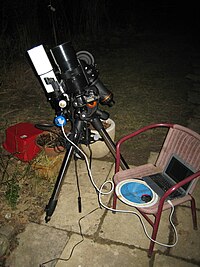EQUIPMENT
What you need to take your first quality astrophoto
Many of us have a compact camera we use to take everyday pictures, so why not turn it on the night sky? Today’s compacts can take reasonable images in low-light conditions, and some even include manual modes that let you take full control of the camera’s functions. The ability to adjust a camera’s settings for yourself will make for much improved images.
With the latest Canon PowerShot compact, you can keep the camera’s shutter open to the starlight for up to 15 seconds, and make its imaging chip very sensitive to light, with ISO values up to 3200. The Nikon Coolpix P500 also allows for manual shooting at these high and sensitive ISO values.
Settings like ISO allow you to capture a wide array of subjects, but there is a downside to compact cameras. Their lens sizes and zoom abilities often don’t let as much light reach the imaging chip as wider DSLR camera lenses do. And being fixed, they don’t have the flexibility of a DSLR’s interchangeable lenses.
DSLR (Digital Single Lens Reflex) cameras offer a much wider range of functions and most experienced astrophotographers will have one in their arsenal. They have the widest range of settings, providing full manual control.
They also have interchangeable lenses so you can swap to a more powerful lens to get close in on a bright star cluster like the Pleiades in Taurus, or a nebula like the Flame Nebula in Orion.
Many DSLRs also have an option to set the opening of the camera’s shutter – the exposure – in increments of seconds up to 30 seconds. After that, they’ll have a bulb or ‘B’ setting for even longer exposures – great for capturing star trails.
In our reviews, Canon and Nikon DSLRs have stood out for what they offer budding astrophotographers. The Canon 300D, 400D and 500D models are all good entry-level DSLRs for astrophotography, as is the Nikon D50 and D90. Fuji’s S3 Pro has also performed well in our tests.
to be continued...



 پاسخ با نقل قول
پاسخ با نقل قول




























